Painting Metal Horses
| STAGE#14 - Painting Cavalry ('80-10' 54mm Mounted Mamaluk). | |
|
As we promised for a while, a tutorial on painting a horse. Please note that the choices we made are not a hard and fast rule. If you want to experiment with different breeds of horses then plan your colours and Primer accordingly. Pic 1: We have already assembled the figure and have primed it with white. Priming is essential to give 'tooth' to later paint layers. Make sure it is dry before applying more paint. Pic 2: Add a base coat of black over the horse's flesh, reins and hair. leave the blanket white. White increases the glow and brightens the later colours laid over it. Why not experiment with different prime colours. White is also very handy with Napoleonic figures as many have lots of white on their uniforms so it saves overpainting the areas again. Pic 3 and 4: Drybrush Horse Flat Brown av984. Remember when dry brushing to not add water to the paint, wipe the brush quickly on a tissue to remove excess paint and only use and old stiff brush as this tends to wear the brush and spread the bristles/hairs. This layer of paint should be added with a firm hand and apply with quick strong strokes, you will have to add more paint as you go over the body, just remember to keep the paint scarce on the brush. Pic 5: Add a second layer using the dry brush method using a lighter brown like Mahogany Brown av846. Then carefully darken the hair of the horse tail and maine to add suitable contrast and further bring out the drybrushed details. Use neat S.S.Cam. Black av822. Pic 6: Base paint the Blanket and end of bed roll Flat Green 968. Due to the paint density mix a small amount of water with it to dilute just enough to prevent brush strokes from forming. Add Red (Vermillion) av947 for the blanket trim and bedroll as shown. Now add Red Leather av818 to the Saddle back support. Pic 7: Finally add the wash of black to the blanket trim and then add av959 Purple neat to the reins. Other details can be added if desired like some natural steel for the metal parts of the bridle and some additional colour for the Horses eyes. Tips to Remember.
|
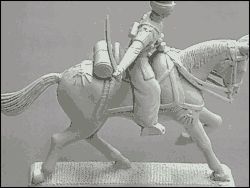 |
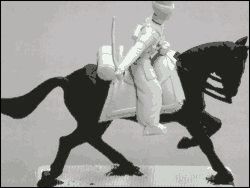 |
|
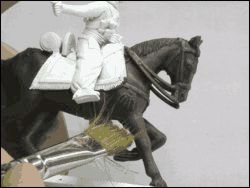 |
|
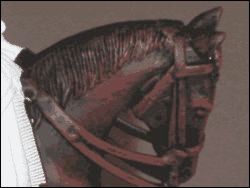 |
|
 |
|
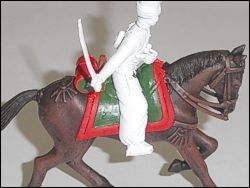 |
|
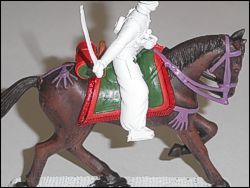 |
|
